The flood has passed, but the traces remain... The chestnut season in Trung Khanh ( Cao Bang ) is still fragrant and sweet. Under the canopy of the ancient chestnut tree, the cool breeze rustles the clusters of ripe fruit that have turned a burnt yellow color.

Somewhere, in the corners of the garden, people are harvesting chestnuts, while setting up cast iron pots and pans to boil and roast, enjoying the local specialties. Some tourists from far away remember to come here in time, welcoming the fruit season in the warm affection of the people mixed with the lingering worries.
In his family's chestnut garden in Bo Da hamlet, Trung Khanh town, veteran Hoang Van Du was cracking the nuts to separate them from the thorny shells while filming a video with a simple message: "This is a gift to send to Hanoi. The sweetness is sent downstream. We and the people have to check carefully because of the rain and floods, many nuts are damaged." Recently, Mr. Du and other veterans of Cao Bang province have been busy supporting the flooded areas, rebuilding houses for the people, and almost handing over the chestnut harvest to his family. Looking up at the canopy, you can see that most of the chestnuts in his garden are labeled "First chestnut tree". These are hundred-year-old trees, both a source of pride and filled with childhood memories through each emotional story.
Sweet and bitter please send downstream...
Trung Khanh district is nearly 60 km from Cao Bang city, has a type of chestnut that is fragrant, sweet, and crumbly. Every year, in the fall, chestnuts begin to ripen, people enter the harvest season, which is also the season tourism Bustling, Cao Bang chestnuts are distributed by truck to all regions. As always, people sell, but always choose the best ones as gifts.
Trung Khanh has more than 250 hectares of chestnut trees, concentrated in Trung Khanh town and the communes of Chi Vien, Kham Thanh, Dam Thuy, Dinh Phong, Phong Chau, Ngoc Khe... bringing significant value to trade and tourism. Visitors can visit any garden to admire and enjoy chestnuts. In Cao Bang cuisine, chestnuts bring many flavors to dishes. In addition to traditional boiled and roasted chestnuts, the Tay and Nung people also prepare stews, sticky rice, cakes... which are extremely unique.
Under the canopy, people proudly mention the 120-year-old chestnut tree in Ban Khay (Chi Vien commune) recognized as a Vietnam Heritage Tree. The tree is about 1.2m in diameter, 15m high, with luxuriant, wide leaves. According to statistics from the Vietnam Association for Conservation of Nature and Environment, Cao Bang has eight chestnut trees recognized as Vietnam Heritage Trees, including the Ban Khay chestnut tree. Since this ancient chestnut tree was honored, tourists visiting Ban Gioc waterfall and Nguom Ngao cave often come to admire, take photos, and buy chestnuts as gifts. Not only the fruit season, the chestnut tree has its own beauty in all four seasons.
In spring, the trees bloom, the whole garden is filled with a sweet fragrance, clusters of pure white flowers peeking out from the green foliage. In summer, the green fruit looks like young rambutans, glowing with vitality. In autumn, when the fruit changes color from green to burnt yellow, people use bamboo poles with hooks to shake the fruit to make it fall. Some fruits have seeds that fall right away, while others require a machete or a piece of ironwood to gently hit the seeds. Ripe chestnuts reveal cracks in the outer shell, containing one to three seeds inside. This fruit is very special, with a rough, thorny appearance and a sweet, rich flavor inside.
Locals said that every chestnut season, before each market, traders would go to each garden to buy. In the market, the amount of chestnuts introduced as originating from Chongqing is huge, but the actual chestnut production is not much. Sometimes, when tourists arrive late, the garden is already out of chestnuts, and there are no chestnuts to sell all year round.
Locals enthusiastically guide tourists on how to distinguish Chongqing chestnuts: Small in size, unevenly round, with fluff, yellow inside, pleasantly fragrant and crumbly like rice cake inside .
Chestnuts on the market are usually very large, round, hairless, white inside and not fragrant if not marinated with other ingredients. In terms of price, chestnuts from Chongqing are also twice as expensive. According to experts, due to the soil and climate, the flavor of chestnuts here is unmistakable. If you take Chongqing chestnut trees to plant elsewhere, the flavor will be different.
As the Tay ethnic poet Y Phuong said: The sweet and fragrant chestnuts of Trung Khanh are also due to the hands of the growers and fertilizers. Chestnuts are a gift not for haste or haste. And people do not focus on commercial value but forget stories with cultural depth and affection. Garden owners often remind us to take it slow and leisurely so that the chestnuts can “ripen” once more when we enjoy them.
These days, Chongqing has clear skies and high clouds. Light wisps of smoke linger in the chestnut gardens. “The chestnuts are singing!” - a child’s words make visitors stunned. It is true that chestnut gardens, one after another, are bustling into season. The harvest has only been in full swing for a few days, morning and night, there is a rustling, rustling sound of the wind, the sound of chestnuts falling rhythmically, as if returning to people the myriad raindrops carrying the color of mother earth. Occasionally, wild chickens also crave the seeds, trying to peck them but still missing. For many seasons, civets have been climbing trees, knowing that thorny fruits are difficult to pick, seemingly waiting for the seeds to “fall off their navels” or at most, smelling their scent.
In the mist, silently remembering the golden season
In previous autumns, when coming to Chongqing, tourists were captivated by the immense “golden sea” of ripe rice in the valley. The autumn colors covered the rice fields with gentle, magical light, especially at dawn and dusk. This year, due to the impact of natural disasters, the mountains and forests still have fresh wounds that have not yet healed. Autumn is filled with mist, magical and dreamy. The Quay Son River winds like a soft silk strip, the golden sunlight pours like honey embracing the fields marked by rain, wind, and flooding. The space is vague, making people's hearts sink. Tourists used to love the “golden seasons”, the joyful seasons, but also need these poignant moments, to share, to gain more empathy, trust, and gratitude for the land and people of the mountains and rivers.
As usual, the Tay people in Phong Nam valley still make green rice flakes waiting for tourists. The flat, crescent-shaped green flakes are gently green with a faint scent of young rice milk, wrapped in green dong leaves, tied with a lingering yellow straw. The people of the highlands are like that, in the midst of hardship and hardship, they still bring a sense of relaxation and peace to visitors. In the chilly autumn air, listening to Then and Tinh melodies, we can hear the optimistic sounds of life beginning to return. In each house and garden, persimmons are in full fruit season, red and plump, hanging like lanterns lighting up the fire.
In Trung Khanh district, there are many historical relics and scenic spots that have been ranked, including national relics: Ban Gioc Waterfall, Nguom Ngao Cave in Dam Thuy Commune; Voice of Vietnam Radio Station at Nguom Chien Cave (1966-1978) in Trung Khanh Town and Mountain God's Eye in Cao Chuong Commune. Four ethnic groups: Tay, Nung, H'Mong, Kinh live together and have major festivals: Ban Gioc Waterfall Festival, Hoang Luc Temple Festival (Dinh Phong Commune); Co Sau Festival (Trung Khanh Town); Cau Mua Festival (Cao Thang Commune, Trung Phuc Commune); Long Tong Festival (Cao Chuong Commune, Tri Phuong Commune); Hang Tan Festival (Tra Linh Town); Thanh Minh Festival (Quang Trung Commune); Long Vuong Temple Festival (Doai Duong Commune) ... attracting a large number of domestic and international tourists to visit and explore. This is an opportunity for Trung Khanh district to focus on attracting investment to develop tourism into a spearhead economic sector.
Special agricultural tourism products such as chestnuts, honey sticky rice, Pi Pat sticky rice, grass duck, white jelly, Khao cake, etc. are also focused on to create an impression on tourists and the market. Many community tourism models associated with preserving indigenous culture from architectural space, landscape, cuisine, folk culture, environmental protection, etc. are oriented and supported for wider and more effective implementation. Tourism experts believe that ancient chestnut gardens are very suitable for developing community tourism models but are currently not focused on.
The tourism industry of Trung Khanh district has recently faced many difficulties such as: types of services have not been invested in; investment has not been attracted; tourism management has many shortcomings; tourism products with unique characteristics have not been developed; human resources are still lacking and weak; mechanisms and policies for tourism development as well as support to attract investment have not been developed. The above difficulties need to be overcome soon with solutions that are both synchronous and respect the unique characteristics.
In the hospitable land of “wine by the jar, fruit by the tree”, missing a beat is a never-ending longing. But that silence makes people yearn, expect and come back more in the following seasons. The chestnut tree is like the people of Trung Khanh, with a rough appearance but a strong vitality. A poet wrote these touching lines: “Truong Khanh leans/Chestnuts are sweet with the melody of Da Hai/Oh Tay girl! Let me go back to Ban Gioc/Quay Son water is as clear as tears/Crying on stormy days”.
Source


![[Photo] Prime Minister Pham Minh Chinh receives Rabbi Yoav Ben Tzur, Israeli Minister of Labor](https://vphoto.vietnam.vn/thumb/1200x675/vietnam/resource/IMAGE/2025/5/21/511bf6664512413ca5a275cbf3fb2f65)
![[Photo] Determining the pairs in the team semi-finals of the National Table Tennis Championship of Nhan Dan Newspaper](https://vphoto.vietnam.vn/thumb/1200x675/vietnam/resource/IMAGE/2025/5/21/eacbf7ae6a59497e9ae5da8e63d227bf)

![[Photo] Scientific workshop "Building a socialist model associated with socialist people in Hai Phong city in the period of 2025-2030 and the following years"](https://vphoto.vietnam.vn/thumb/1200x675/vietnam/resource/IMAGE/2025/5/21/5098e06c813243b1bf5670f9dc20ad0a)

![[Photo] Prime Minister Pham Minh Chinh attends the groundbreaking ceremony of Trump International Hung Yen Project](https://vphoto.vietnam.vn/thumb/1200x675/vietnam/resource/IMAGE/2025/5/21/ca84b87a74da4cddb2992a86966284cf)



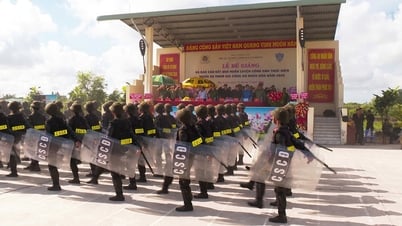
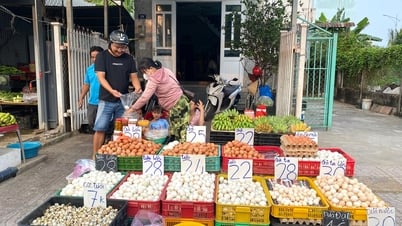
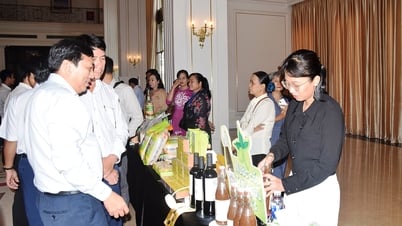
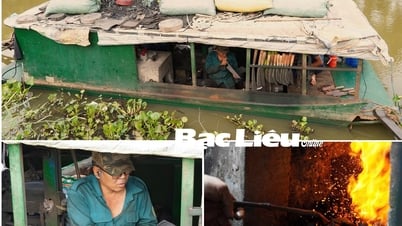





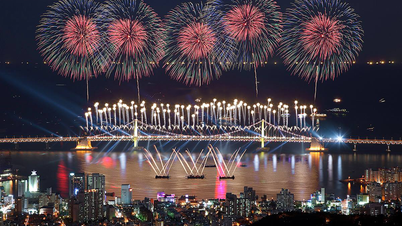
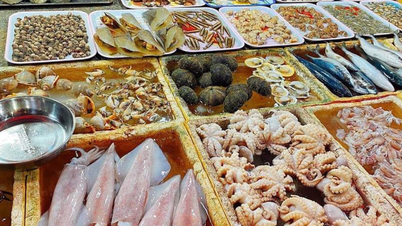
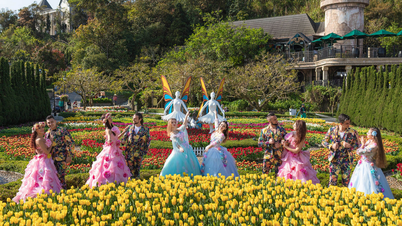
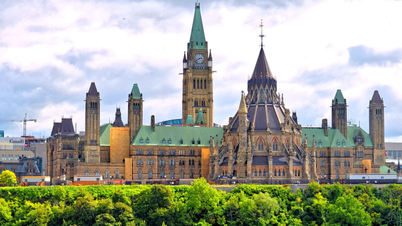

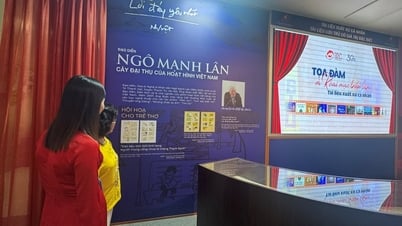






































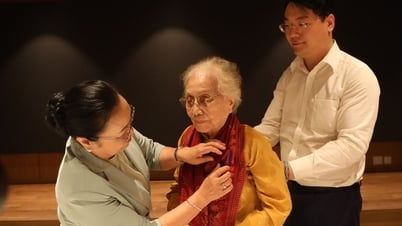


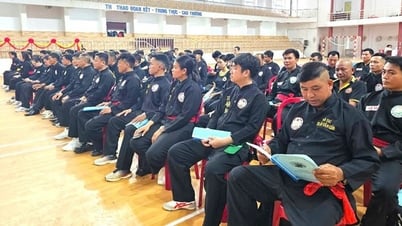



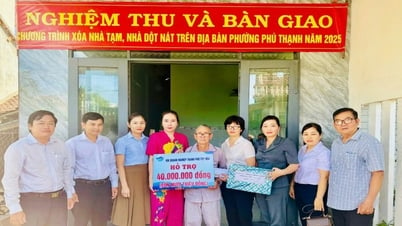



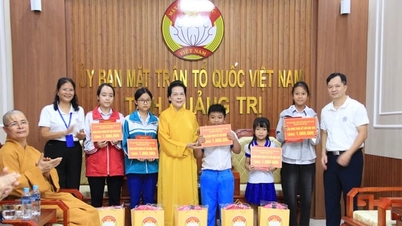

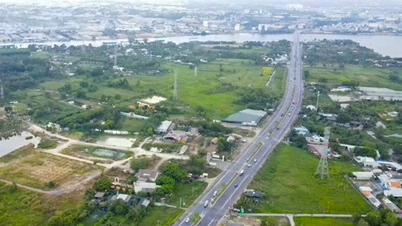

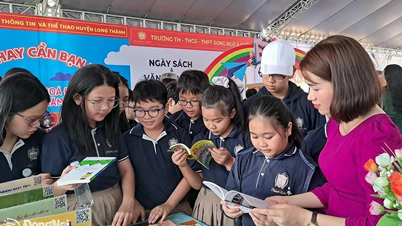












Comment (0)